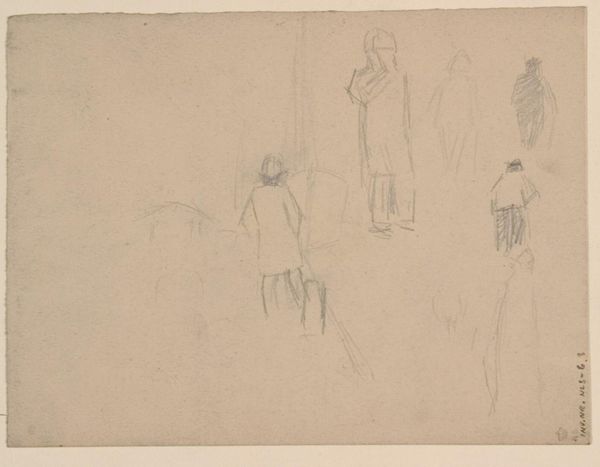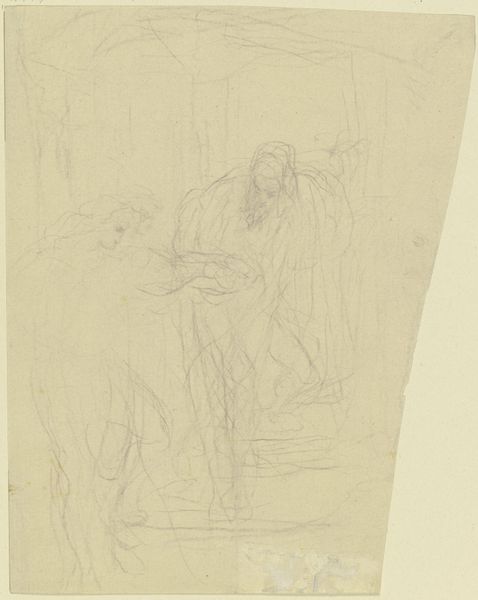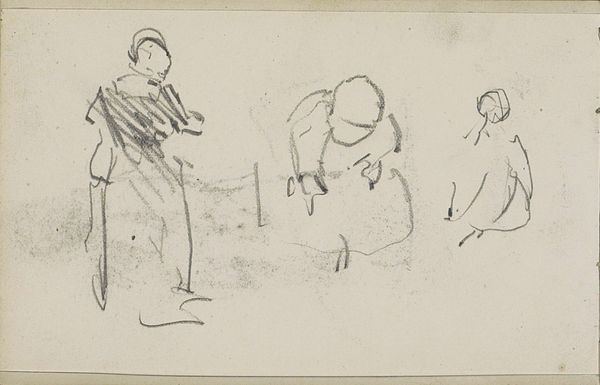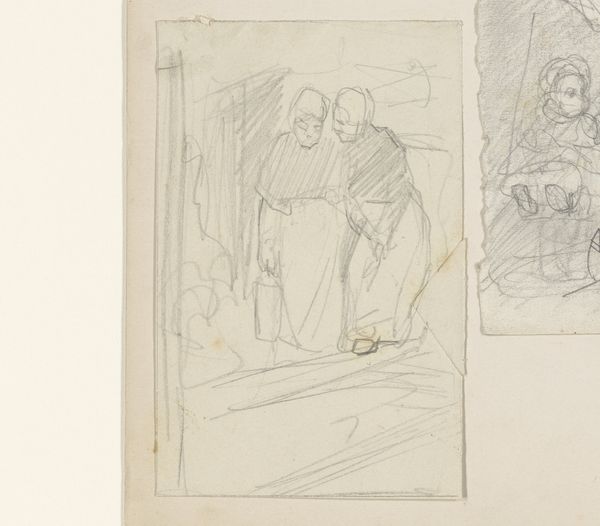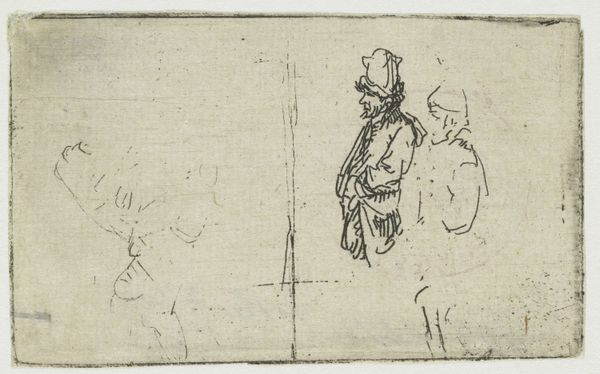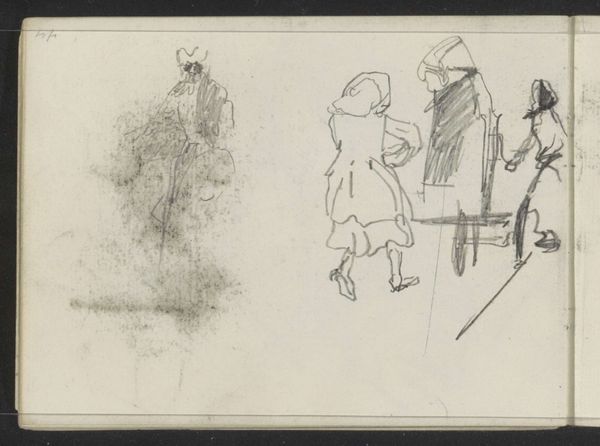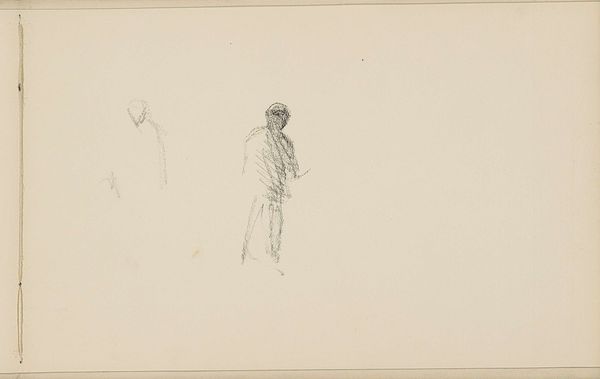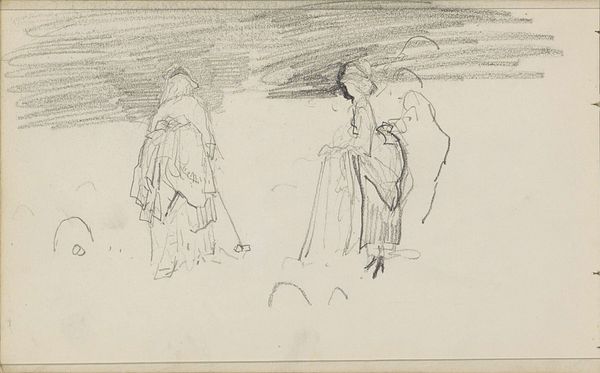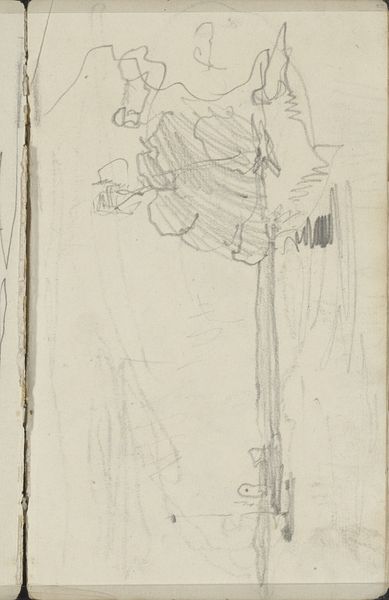
drawing, paper, pencil
#
drawing
#
figuration
#
paper
#
pencil
#
academic-art
Dimensions: overall: 6.7 x 9.3 cm (2 5/8 x 3 11/16 in.)
Copyright: National Gallery of Art: CC0 1.0
Editor: Here we have John Flaxman’s “Two Studies of Standing Figure and Child,” a pencil drawing on paper. I’m struck by the rawness of it, how sketchy and unfinished it seems. What's your take on this? Curator: Well, what draws my attention immediately is the means of production here. It’s not about illusionism, but about the immediate, tangible process of making an image. Consider the ready availability and low cost of pencil and paper during Flaxman’s time, enabling these quick studies. It emphasizes the accessibility of artistic practice. Where did Flaxman likely source his materials and whom would the studies serve? Editor: I suppose these materials allowed for experimentation, affordable practice, or even planning for a larger, more formal piece. Curator: Precisely. The materiality speaks to its function within the artistic workflow. And think about Flaxman's neoclassical leanings; this wasn’t just about capturing likeness, but exploring ideal forms. These materials—paper and pencil—aren’t precious like marble or gold leaf. Instead, they democratize access to image-making. Editor: So the humble materials are actually integral to understanding the art and the artist’s context? I hadn't considered it that way. Curator: Absolutely! We can investigate the commercial networks through which Flaxman obtained his pencils, the role of paper production in the 18th century, and how these economic systems facilitated artistic production and were then also commodified by wealthy patrons. Editor: I see how focusing on the material aspects opens up a much broader understanding of the artwork's context and place in society. Thanks for highlighting this. Curator: My pleasure, realizing that even in "unfinished" studies, clues exist within materials themselves that expand a wider analysis, always proving useful.
Comments
No comments
Be the first to comment and join the conversation on the ultimate creative platform.
